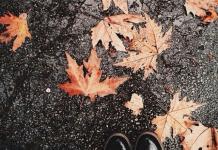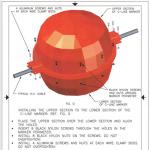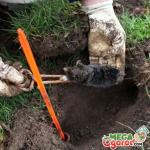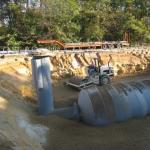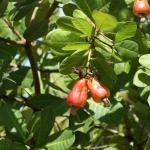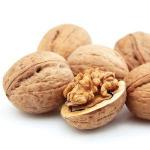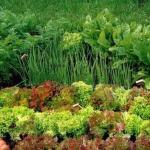You cannot grow a rich harvest without fertilizers - any gardener knows this. Strawberries are one of the most popular berry crops, so it is important to know how and when you need to fertilize the soil in strawberry beds, what fertilizing this berry requires in early spring, how to feed strawberries during flowering, whether it is possible to feed strawberries during fruiting and whether it is necessary Fertilize the area in the fall. You will find answers to all these questions in our article.
When and what fertilizers do strawberries need?
Strawberries are fed with mineral and organic fertilizers. It is especially important to provide the plant with nutrition in spring, summer and during the formation of flower buds.
Mineral fertilizers ensure healthy growth and abundant flowering of strawberries. In conditions of shortage nitrogen you'll end up with pale leaves and small, tasteless berries. The most commonly used nitrogen fertilizers for strawberries are calcium nitrate or ammonium sulfate. Anyone who is busy or in a hurry can fertilize the beds with Nitroammophos.
Potassium Strawberries need it to increase the sugar content in the fruit and prolong the growing season until autumn. Potassium salt or potassium sulfate is used as fertilizers.
Liquid fertilizer for strawberries
A universal fertilizer for strawberries is urea: it is completely soluble in water and is suitable for any type of soil. However, you should not overuse strawberries with urea, since the fruits may become watery and lose their taste.
Their phosphorus Superphosphate is the most commonly used fertilizer.
Organic fertilizers – humus and compost – improve the properties and structure of the soil, it retains water longer, and the nutrients from these fertilizers are concentrated in the soil for several years to come. An effective fertilizer is ash, which can be applied to the soil to increase yield twice a season - in early spring and after pruning.
When and how to fertilize strawberries
How to fertilize strawberries in spring
The first fertilizing - organic, nitrogen - in the form of a solution of mullein or chicken droppings is carried out at the beginning of the season, as soon as the snow melts. It is necessary to stimulate the growth of leaves and young shoots of strawberries. However, this feeding will be required for bushes of the second year and older, and strawberries planted last year will need enough fertilizer, which was applied when preparing the site. After applying fertilizers, the soil on the site can be mulched with organic matter: moss or sawdust, which will gradually turn into humus.
When the strawberries bloom, they are fed with a solution of the complete mineral complex, prepared in accordance with the instructions. During this period, you can add a solution of wood ash and potassium permanganate to the soil, since when flower stalks appear, the plant needs potassium more than other elements.
During the formation of the ovaries, the soil in the area is watered with a herbal infusion, for the preparation of which the weeds collected from all the beds are crushed, after removing their roots, filled with water and left for a week in a warm place. Strawberries also respond well to nettle infusion prepared according to the same recipe.
Foliar feeding is also effective in spring: on a windless morning, strawberries are sprayed on the leaves with a solution of nitrogen and microelements, for example, boric acid.
How to feed strawberries after harvest
Fertilizing strawberries in summer
In the second half of July, mineral fertilizers containing potassium and microelements are added to the soil, which are necessary for strawberries to form new roots and lay flower buds for the next year. You can also feed strawberries with slurry: fill a quarter of a bucket with manure, add water to the top, let it sit for three days, stirring from time to time, and dilute it again with water before adding it to the soil. Strawberries also respond well to yeast fertilizer, for the preparation of which a large packet of yeast is dissolved in 5 liters of warm water, allowed to ferment for several days, and then half a liter of this yeast fertilizer is added to a bucket of water.
Nitroammofoska, ash and urea are used to fertilize strawberries in the summer. A solution is prepared from urea, and the ash is simply scattered around the bushes. If the weather is dry, water the strawberry bed thoroughly after fertilizing.
At the end of August, it is advisable to add a urea solution to the soil around the strawberry bushes.
How to feed strawberries in the fall
Feeding in mid-September should help the bushes, especially newly planted ones, survive the winter well. At this time of year, strawberries need both organic and mineral fertilizers, and one-year-old bushes need feeding most of all. The most preferable organic materials are a solution of fermented mullein and wood ash in powder form. The main purpose for which fertilizing is applied is to preserve the roots and provide them with nutrition throughout the winter, therefore, the phosphorus and potassium components in the fertilizing should be increased, and the nitrogen component should be reduced to nothing.

Properly cared for strawberries
September fertilizing is applied in liquid form, but in October it is better to use granular and dry fertilizers. If you want to prepare a mixture of organic and mineral fertilizers, then keep in mind that this must be done immediately before applying to the soil, but they cannot be infused together.
Read also
Correctly chosen fertilizing is a guarantee of a good strawberry harvestFertilizing strawberries is a desirable procedure during the formation of the ovary and active fruiting. This is especially true for remontant strawberries. You can get large and sweet berries only with additional nutrition to the bushes.
Why feed strawberries during flowering and fruiting?
Throughout the entire development cycle, the plant needs nutrients and minerals. During the period of active growth, flowering and ovary formation, fruiting and after harvest, strawberries require various additives and fertilizing. Even the most fertile soil, after a few years, tends to deplete, as a result of which the yield and size of the fruits decrease, and their taste decreases.
During the period of flowering and the formation of strawberries, the bushes need additional nutrition, but is it possible to feed strawberries during fruiting? There is an opinion that during the period of active growth and ripening of berries it is not recommended to add any additives, since the fruits tend to absorb everything that the bush feeds on.
This is true, but it is during this period that plants need support. Therefore, you need to carefully choose: what to feed strawberries during fruiting, and fertilizers that can be applied to the berries.
How to fertilize strawberries during flowering
In addition to the planned seasonal feeding of strawberries, it is necessary to take care of their proper nutrition at the beginning of flowering. Depending on the climate of the area, the first flower stalks appear at the beginning or end of May. During this period, strawberries need a lot of potassium. Feeding can be done by root method, or by spraying.
How to feed strawberries: root feeding recipes
The easiest and fastest way to feed flowering strawberry bushes is to use a solution of potassium nitrate: you need to use a teaspoon of the substance per 10 liters of water, 0.5 liters is enough for one bush.
The special preparation "Ovary" contains all the necessary substances to increase the number of peduncles and active formation of the ovary. When using, you must strictly follow the instructions.
Many gardeners, when caring for strawberries, prefer to use only natural substances. Before feeding strawberries, we suggest that you familiarize yourself with the most popular folk recipes.
Wood ash solution
For 1 liter of water use a glass of ash. Pour boiling water over it and stir thoroughly. When the solution has cooled, it is filtered and used for feeding (0.5 liters per bush).
Bird droppings or cow manure
For a 10 liter bucket, take 2.5 kg of manure, fill it to the top with water and leave it to infuse for a day, after which it is thoroughly mixed. To avoid any smell before infusion, add humate "Baikal". 1 liter of the finished infusion is diluted in 20 liters of water. It is enough to use 0.5 liters per bush. The substance is quite caustic, so it is necessary to water carefully, without getting on the above-ground part of the plant.
Yeast fertilizer for strawberries
1 kg of fresh yeast is dissolved in 5 liters of water and allowed to brew for a day. Then 1 liter of the mixture is diluted in 20 liters of liquid, and the plants are fed - 0.5 liters per bush.
Foliar feeding of strawberries during the flowering period
Foliar feeding of strawberries involves spraying the bushes with nutrient solutions. It is important to carefully treat the lower part of the leaves, since it is responsible for absorbing nutrients.
Among the finished products, the most effective and recognized are “Agros”, “Gera” and “Rubin”. It is necessary to strictly adhere to the dosage standards indicated on the packaging.
The following substances can also be used for spraying:
- 2 gr. potassium permanganate and potassium sulfate, 1 g of boric acid per 1 liter of water. The bushes are carefully treated with the resulting solution;
- Potassium nitrate: teaspoon per 5 liters of liquid.
To treat the bushes, use the same yeast solution recipe as for root feeding.
Nettle tincture for spraying strawberries
It is necessary to collect fresh nettles and chop them finely. Fill a 10 liter bucket with chopped nettles and add hot water, plus 50-60 degrees Celsius. Leave for 24 hours. The finished infusion is diluted with water in a ratio of 1:10. The bushes are sprayed with the solution during the flowering period.
Fertilizing strawberries during the flowering period: video
Fertilizing strawberries during fruiting
In search of an answer to the question: is it necessary to feed strawberries during fruiting, pay attention to the recommendations of gardeners. It has been experimentally confirmed that fertilizing strawberries during this period allows you to grow a plentiful, large and sweet harvest. Fertilizing also stimulates the ripening of berries, which is very important in bad weather conditions and early frosts.
How to feed strawberries at the root during fruiting period
During the period of formation and ripening of berries, you should not use chemicals, since the berries absorb and accumulate substances harmful to the body. You should use natural remedies available to every summer resident:
- Treatment of strawberries during fruiting with compost: 1 kg of rotted fertilizer is diluted in a bucket of water and the bushes are watered;
- Chicken manure is infused in water at the rate of 1-2 kg per bucket of water for 2-3 days. It should be used in a proportion of 1 part of the infusion of litter to 10 parts of water;
- Cow dung is infused for 3-4 days in warm water at the rate of 2-3 kg per bucket of water. 4 liters of the finished infusion are diluted with 10 liters of water; 0.5 liters are used to water 1 bush.
Foliar feeding of strawberries during fruiting is prohibited
Spraying strawberries during fruiting is not allowed. During this period, it is recommended to feed and water the bushes only using the root method. Rainy weather and improper watering can lead to the death of an entire plantation.
How to fertilize strawberries during fruiting: video
It is important to know not only how to treat strawberries during fruiting, but also when to do it. Root feeding of strawberries, both with chemicals and organic substances, must be carried out in moist soil after watering or good rain. Foliar - on the contrary, in dry and sunny weather, since beneficial substances must be absorbed into the leaves.
For spraying and watering with fertilizers, you should choose the evening when the sun sets. Processing during the day is unacceptable, since the leaves of the plant will burn if liquid enters.
Any fertilizing, root or foliar, is carried out once during a certain period of development of the strawberry bush. For example, during flowering, and the next one - during fruiting.
Standard fertilizing recipes are ideal for light loamy and sandy loam soil with a low salt content. You can find out exactly what plants need only by analyzing the soil for its components.
Bottom line
Fertilizing strawberries during flowering and fruiting is a necessary procedure. The quantity and quality of the harvest depends on this. It is necessary to strictly separate root and foliar feedings, and follow the norms for applying fertilizers.
Many people know that strawberries should be fed three times a year, including during flowering. This period is the most significant in the life of the plant, since at this time the fruits are set and the final formation of the crop occurs. By following the basic rules, advice and recommendations of experts, you can get a good harvest of berries.

Why do you need feeding?
During the period of fruit set and during flowering, when budding occurs, you should take special care of strawberry bushes. Some gardeners believe that during the active flowering phase there is no need to feed or even touch the fruit ovaries, but all attention should be switched to watering, loosening, weeding and trimming the mustache. Therefore, fertilizers are applied only in early spring and autumn.
But the plant needs nutrition throughout the growing season. Strawberries are in a permanent place, gradually the soil reserves of nutrients are depleted. For this reason, it is recommended to renew and feed the berry bushes on the ridge every two years. During the period when strawberries bloom, they especially need additional substances and care. The quality of the harvest and the richness of the fruit depend on this, which is especially important for preserving the varietal qualities of this plant crop.
Berry bushes should be fed several times: in the spring during the budding phase, during the ovary period of fruit buds, in the active flowering phase and in the summer - before and after harvesting. Moreover, both newly planted and already fruit-bearing bushes. All stages are interconnected: in the period after winter frosts, the plant needs to recover, form and preserve fruit and flower primordia, and also distribute the necessary substances for fruit ripening.
In order to feed the plant thoroughly and approach this process with full responsibility, you need to figure out how best to do it.

What is the best way to fertilize?
Strawberries bloom in spring, in May. In northern zones, the flowering period may last until early June. Fertilizing should be done using various types of fertilizers.
There are several types of fertilizers: mineral-based, organic and mixed, as well as biostimulants and hormones. Minerals include potassium, nitrogen, phosphorus and magnesium. All these substances are involved in the formation of buds, the formation of ovaries and fruits. The classic fertilizer for this period is nitroammophoska.

Complex compounds contain all the necessary elements for feeding strawberry bushes. The correct balance of phosphorus, nitrogen and potassium contributes to the complete distribution of nutrients. They are applied, like mineral compounds, directly into the soil, under abundant watering.
The method of feeding berry bushes can be done based on the quality indicators and characteristics of the soil. Often, gardeners use ready-made fertilizers and compounds on the beds. They are balanced in composition and are well absorbed by the plant through the soil. But you can fertilize them with folk remedies.

The application of mineral fertilizers to the soil during the flowering of berry bushes is an important stage in the care and production of crop yields.
There is no need to fear that the fruits will become saturated with chemicals and suffer as a result. On the contrary, timely watering with nutrient compositions normalizes the metabolism of the berry crop.
The choice of feeding should also be made taking into account the need for useful elements during this period, which must include potassium. It is known to be found in wood ash and bird droppings. Therefore, it is necessary to feed with complex formulations with the addition of these products.
Regular yeast and boric acid are in demand. Boron increases the quantitative composition of the ovary, improves the taste of the fruit, making them sugary and large. Acid can be applied to the root zone in the usual way, or you can spray flowering strawberry bushes using a spray bottle.
Yeast has been used for a long time during the flowering period of strawberries. The vitamins and minerals included in their composition provide nutrition to the bushes, which, in turn, has a positive effect on the quality of the berries: they become sweet and juicy, and significantly increase in weight. To use, prepare a starter: take one packet of yeast per five liters of water, add two tablespoons of sugar and leave for a while. Then the composition is diluted at the rate of one part starter to two parts water. On average, 5 liters of yeast fertilizer will be needed to water 10 bushes.

The bread composition is an alternative to the yeast composition. This method is very convenient in terms of savings. Housewives can dry the pieces of bread, and soak the finished crackers in water and leave them to ferment properly. This process lasts on average a week. The fermented composition is squeezed out, thrown away crumbly, and the liquid is diluted in a ratio of 1 to 10 and the bushes are poured at the root. One plant will need half a liter of bread fertilizer.

During the flowering period, strawberries are treated with an iodine compound to prevent dangerous diseases. Prepare the composition: copper sulfate and boric acid, half a teaspoon per bucket of water, plus 30 drops of iodine. This composition can be equally effectively watered at the roots or sprayed on plants.
Saltpeter is another means for fertilizing strawberries during flowering and the appearance of the ovary. The composition is prepared simply: add a teaspoon of potassium nitrate to a bucket of water, stir thoroughly and pour half a liter onto one bush.

Being a biostimulant, the drug increases and accelerates the formation of a healthy ovary. During the flowering period, the application of the drug protects the plant from the effects of unfavorable factors, such as sudden changes in temperature and humidity. The active substance of the drug restores the balance of nutrients, preventing their loss. Before irrigation, prepare a solution of one gram of the drug per liter of water. Spray the bushes at the very beginning of the formation of flower stalks.
Ash from coniferous trees is an excellent means of feeding garden strawberries. In the absence of conifers, any other type of wood will do. The main thing is to dissolve it in a bucket and add it to the soil only in diluted form. Take a liter of moderately warm water per glass of the composition. The steamed mixture is diluted with water several times before watering.
Another effective means of feeding strawberry bushes is rotted cow manure. An infusion is prepared for use: take a bucket of water for two liters of mullein and leave for a day. Before use, you can add a pinch of potassium humate to the composition. There is half a liter of this solution per strawberry bush.
When adding organic fertilizers, avoid getting them on leaves and flowers.

Fertilizer application methods
There are two types of feeding - root and foliar (foliar). Before carrying out the procedure, a number of preparatory measures should be carried out, the main ones of which are freeing the root system of the plant from debris, branches and mulch, removing weeds and loosening the root zone of the plant. This will provide access to fresh air to its vital organs and create favorable conditions for the formation of fruits.
Root timely spraying of the crown of the bush with fungicides and insecticides will preserve the health of the plant and protect it from insects, fungi and pathogenic bacteria.

Root
Root feeding during strawberry flowering is a convenient and familiar way to apply fertilizer. Beneficial substances are well absorbed through the root system of the plant, spreading throughout all its branches and parts. Fertilizers must be applied with caution, strictly as directed - at the root, otherwise you can burn the young strawberry leaves.
There are uniform rules and sequence for applying fertilizing and fertilizers:
- mineral compositions are applied only once during the period of bud binding;
- chemicals are not used at this time;
- they focus on the addition of potassium compounds, since potassium contributes to the formation of the crop;
- with the beginning of the appearance of inflorescences, they are fed with mullein, ash and potassium salt;
- as soon as the buds are formed, they switch to applying nitrate.

Foliar
This method involves irrigating strawberry bushes with nutritional compounds during flowering. You can buy them ready-made, or you can make them yourself. It is only important to adhere to the basic rules of foliar feeding:
- Irrigation with compounds should be carried out in calm weather, when there is no rain or wind;
- during the latter process, direct sunlight should be avoided;
- irrigate the leaves of the strawberry bush, focusing on their lower part, since this is where the greatest absorption of nutrients takes place;
- For spraying, special sprayers are used - manual or mechanical, and safety measures are also taken, which include wearing protective masks and gloves.

For irrigation, preparations and compositions “Rubin”, “Agros”, “Gera” and others are used, strictly following the instructions and rules of use.
- Immunostimulator "Rubin 7" contains the necessary set of useful elements, promotes the formation of the ovary, ensures the growth and development of strawberries, and also protects them from premature wilting and diseases. The complex is designed for three applications. The composition is placed in a spray bottle, first diluting it in three liters of water. The prepared mixture must be used immediately, as it has a short shelf life. Repeated irrigation should be carried out after about two weeks.

- Zinc sulfate (white sulfate) Before spraying, dilute in water at the rate of several grams of the drug per bucket of water. This will promote the formation of a healthy ovary.
- For foliar feeding potassium nitrate two small spoons of the composition are dissolved in 10 liters of water. Berry bushes are treated with the prepared solution.
- A solution of boric acid and yeast, diluting the indicated compositions in the same proportions as for root dressings. This fertilizing multiplies the inflorescences and increases the quantitative composition of the crop.
- Infusion of young nettle leaves. To do this, finely chopped greens are poured with hot water (not boiling water), left for 24 hours, and then the strawberry bushes are irrigated with a diluted (1:10) mixture.

- Whey. It not only nourishes the plant, but also provides an acidic film that can protect the plant from aphids and insects. Before irrigation, prepare an aqueous solution at a one-to-one ratio.
Often, feeding alone is not enough, so experts recommend using complex formulations. For example, irrigate the bushes with compositions of several components: potassium permanganate, potassium nitrate and boric acid in equal proportions, approximately one gram per 10 liters of water. This healing solution is supplemented with a packet of any fertilizer for this type of plant.

In order for strawberries to remain healthy throughout the growing season and produce a good harvest, Agricultural specialists advise adhering to the basic rules during the flowering period.
- Preference should be given to natural, environmentally friendly compositions with the addition of organic matter: manure, ash and mullein.

- It is best to develop and use any one integrated approach applicable to a given type of soil, taking into account the varietal characteristics of plants. Using multiple fertilizers in different combinations can do more harm than good.
- When feeding, it is important to take into account that strawberries love organic matter most of all, but only in moderation.
- Berry bushes should be fed on moist soil for complete distribution of the nutritional composition. The best time for this is the period after precipitation.
- The bushes should not be touched in the heat, otherwise the leaves may burn in the sun. For this reason, the best time to do this is early morning or evening.

- You need to follow the instructions and prepare compositions for feeding during the flowering period strictly according to the recipe. Please note that the data is given taking into account the general characteristics of loamy soils. Therefore, before using fertilizers, study the composition of the soil in your garden plot.
- It is not recommended to carry out intensive fertilizing during the formation of flower stalks, otherwise you can overdo it and lose part of the harvest.
- Before applying fertilizer to the soil, you should water well and loosen the soil in the root zone, as well as throughout the entire ridge where the berries are planted.
- During flowering, strawberries must be pruned, removing excess tendrils and dry leaves, and also limiting their contact with the ground. It is best to line the root zone with a layer of mulch.
Loosening the soil, timely watering and irrigation are the key to proper plant care and ensure good flowering and a plentiful harvest of berries.


Among other things, It is necessary to remove the very first strawberry flower stalks. This procedure is necessary so that subsequent inflorescences become larger than their predecessors.
An important point is watering flowering bushes. The superficial root system is unable to cope with the plant’s nutrition, so the bushes are watered moderately, avoiding excess moisture. In hot weather, it is enough to water the strawberries once every three days. During the rainy season, watering is carried out much less frequently. Water the blooming berry strictly under the bush, avoiding contact with the flowers and ovaries. You also need to ensure that the roots of the plant remain under the cover of the soil. After irrigation, it is best to loosen the soil around the bush to improve air exchange and normalize root respiration.
In the process of caring for the plant during flowering and ovary formation, pollination methods are also used. Insufficient pollination leads to degeneration of flower segments followed by falling off. Therefore, to avoid these consequences, you need to help the plant by pollinating the flowers using the brush method. To do this, take a soft brush and transfer pollen from flower to flower. It is preferable to do the procedure in the afternoon.

For large areas, special fans are used. Natural honey is used for natural pollination. It is known that bees are the best pollinators of all insects. To attract them, dissolve a large spoonful of honey in a liter of water. The resulting mixture is used to irrigate flowering strawberry bushes. An additional effect of self-pollination can be achieved by growing several different varieties of strawberry bushes on the site at the same time.

By properly caring for and feeding berry bushes during the flowering period, you can significantly increase the yield and quality of berries. The time spent will pay off in spades, and beautiful, aromatic ripe strawberries will decorate the beds on your site.
To learn how to feed strawberries during flowering, see the following video.
In order for the harvest to be good and the strawberry bushes not to begin to fade after fruiting, they need to be fed during the flowering and fruiting period. But this is a very important period of plant development, and even at the moment the berries ripen, not every gardener decides to use fertilizers, no matter what they are. Fertilizing strawberries during flowering and fruiting, the methodology for carrying it out, the type of substances suitable for the procedure, all this will be described below in the article.
Why fertilize strawberries?
It is believed that during fruiting, the berries feed on substances from the bush. This is true, but if the bush is weakened, and this will be the case (it takes a lot of effort to form berries), the berries will not have enough nutrients. Even if the berries grow, the chance that the bush will be able to recover is extremely small. Therefore, gardeners apply fertilizer to strawberries even during the flowering and fruiting period.
Is it correct? It all depends on the product that is used. Yes, chemicals can significantly spoil the harvest; it is unlikely that such a berry can be offered to a child, and an adult should not eat it. But if you use only natural, folk substances, then the chance of harming the berries is reduced to zero.
Which means should you prefer?
Also check out these articles
Mineral or organic matter? It’s a difficult question, but almost all experts in this case are of the same opinion - mineral fertilizers can be applied in early spring, and when the first flowers appear and berries ripen, preference should be given to organic matter.
Mineral fertilizers can be harmful if used a week before the berries are fully ripened. This is the period when they become filled with taste and color. Yes, such feeding will make the fruit more beautiful, but it will not be possible to eat it, such fruits lose their taste and become “plastic.” The deadline for using minerals is 12-14 days before the fruit turns red!
As for organic matter, it is of natural origin, so it cannot cause significant harm. The harm may come down to a bad smell (if you use onion skins, manure) or something like that. Sometimes, with an abundance of organic matter, the taste can become bitter, but the problem here is not in the product, but in its quantity. You need to know when to stop, then there won’t be any problems.
How to feed strawberries during the flowering period?

Fertilizing strawberries during flowering and fruiting should have a rich composition, otherwise it will be of little use. During flowering and fruit formation, the plant primarily needs potassium. Thanks to this mineral element, it not only becomes stronger, more beautiful, but also the number of fruits, shelf life and their future taste also increases!
The first sign of potassium deficiency is brown tips of the leaves. If the situation is not corrected, the harvest may be completely lost. For some gardeners, this problem appears during the first fruiting, for others closer to the second (mid-to-late summer), but in any case it needs to be solved!
Below are several recipes with organic and mineral fertilizers that will not harm the plant during the flowering period.

A 0.02% sulfuric acid solution is also used for spraying, but only at the very beginning of flowering. Sometimes the fertilizer “Baikal EM-1” is also used. This biological substance is completely safe for plants and humans, it does not cause harm, but thanks to the microorganisms in the composition, it improves the quality of the soil and the absorption of beneficial microelements by plants.
How to feed strawberries during the fruiting period?
During fruiting, you can use only organic products. Nitrates accumulate in berries, spoiling their taste, and also completely destroying all the benefits that they could bring to the body.
Fertilizing strawberries during fruiting is necessary if the berries have become smaller, they have a bad shape, the wrong color, or they are sick with something. You can add fertilizer from ash and mullein. The recipe described above is quite suitable in this case.
With the right approach to fertilizing strawberries, you can significantly increase their effectiveness.
- Fertilizing is carried out in sunny weather after abundant watering.
- In some cases, it is necessary not only to feed the plant, but also to cope with diseases or pests. During the fruiting period, you can use only natural remedies. When flowers form, folk and chemical preparations should not be used at all for spraying against pests. The reason is that insects may not pollinate them after this, and this will lead to crop loss.
- You cannot add yeast to acidic soil, otherwise the plant may completely disappear.
- In order not to apply fertilizers, you can simply mulch the ground with peat or humus at the beginning of the season. Even if you need to fertilize strawberries during flowering and fruiting, the rate of necessary substances will still be lower (you can make less concentrated solutions), and therefore there is less risk of spoiling the crop.
To get a good harvest of garden strawberries or, as gardeners say, strawberries, you need to devote some time to caring for strawberries in the spring. Fertilizing, disease prevention, pest control, watering and mulching are the main conditions for obtaining a good harvest of everyone's favorite berries.
Despite a lot of information on this topic, novice lovers have a question: how to fertilize strawberries?
First feeding and preventive treatment against pests
Timely feeding of strawberries during flowering and berry setting is the key to success in obtaining a good harvest. In April, after the snow has melted, it is worth carefully inspecting all the bushes and checking how they survived the winter. You should loosen the ground around the bushes and cut off old dry leaves. Young green ones do not need to be touched. Pruning them will delay fruiting by 2 weeks and the plant will be forced to expend additional effort to build up green mass.
In spring, plants need nitrogen for intensive growth. If an amateur gardener is not opposed to the use of chemical fertilizers on his site, the bushes can be fed with urea, urea or any nitrogen-containing fertilizer. To obtain the required amount of nitrogen for the plant, take 20 g per 10 liters of water.
Strawberries
Adherents of natural farming can be advised to add a handful of rotted compost and 1-2 tablespoons under each bush after loosening. l. vermicompost. You can take a 0.5 liter jar of rotted manure, stir it in a bucket of water and pour 1 liter of solution under each bush. Strawberries will gratefully respond to this care. If there is no manure and compost on the site, you can buy dry manure in the form of granules at gardening stores. Horse, cow, and chicken are sold there. Dilute according to package directions and water the plants or simply sprinkle a few dry granules under each rosette.
To protect against pests and feed, add a handful of ash under each bush. Its use will increase the potassium content in the soil, and it is necessary during the budding period and to increase the sugar content of fruits. In April, there is still enough moisture in the ground; the plants do not need watering before fertilizing.
At the same time, it is worth taking preventive measures to combat weevils and beetles - the larva of the May beetle. The first spoils the buds by gnawing out the core, the second gnaws the roots of the plants, which leads to the death of the bush. For 10 liters, take 40-50 ml of ammonia and pour 0.5 liters of solution under each plant, trying not to get it on the young leaves.
Important! Fresh manure must not be applied to strawberries!
Plants can only be fertilized with rotted manure. Fresh manure will bring with it a lot of weeds and fungal diseases.
If there are no weevils or chafers on the site, you can feed them with ammonia by taking 2 tablespoons. l. on a bucket of water. Nitrogen from ammonia is easily absorbed by plants.
Fertilizing strawberries
If strawberries do not grow leaf mass well, you can use the folk method: make yeast feeding. Dilute 100 g of “live” yeast in 0.5 liters of warm water, add 1 tablespoon of sugar. Let it sit for a while. Pour into a 10 liter bucket and pour 0.5 liters of this solution onto the bushes per outlet.
Second feeding
The next fertilizer must be done during the period of extension of flower stalks or a little later. How to feed strawberries during flowering? Here it is necessary to give the berries a complete complex fertilizer, such as mortar, aquarin, containing not only nitrogen, phosphorus and potassium in the required proportion, but a number of microelements in chelated form, which are highly soluble and immediately absorbed by plants. The required dosage is 20g per 10 liters of water. Strawberries will definitely thank you for such care. You can prepare your own fertilizer for strawberries:
- 0.5 tsp KMnO4 (potassium permanganate);
- Dissolve 0.5 tsp boric acid in a glass of mountains. water;
- 15 drops of iodine;
- 2 table of ammonia or urea.
Add all ingredients to a bucket of water, mix thoroughly and immediately water the plants directly over the leaves (iodine and ammonia quickly evaporate). This solution supplies strawberries with elements - nitrogen and potassium, microelements - manganese, boron and iodine, and also protects the plant from gray rot. For better effects, ash should be added to it. Pour a glass of ash into 2 cups of boiling water for 2 hours and pour into a bucket with the prepared solution. You can simply scatter the ash around the bushes and pour the prepared mixture over it. The effect will be the same. For foliar feeding of strawberries, strain this solution and treat all plants, leaves and buds at a time. The plants should be treated with the same composition after harvesting. To prevent drying out and weed growth, the soil under the strawberries is mulched.
Preparing fertilizer
In spring, grass begins to grow intensively, and green fertilizer can be prepared from it. Fill a plastic container halfway with nettles or any other herb, add water, close and leave for 7-10 days to ferment.
Take 1 liter of the prepared composition, pour it into a bucket, add water and water it at the rate of 0.5-1 liter per bush. This fertilizer is valued for its availability and efficiency; it is also called liquid manure, because its properties are not inferior to purchased organic matter. And the quality of the delivered manure can be assessed only after payment and delivery to the site.
Additional Information! Manure and ash should not be added together.
Since the pH of ash is alkaline and that of manure is acidic, when mixed, a violent reaction will begin between them, releasing large amounts of nitrogen, which can damage plants.
Fermented "tea"
There is another way to prepare green fertilizer. Cooking steps:
- The cut grass is placed in a black bag and sealed tightly. If the grass is dry, it is slightly moistened with water.
- Place in a warm place for 2-3 days. At this time, fermentation occurs. All pathogenic microbes die from high temperature. Fermentation allows you to enrich the green fertilizer solution with “live” bacteria and increases the content of microelements.
- Place the resulting mass into a plastic bucket, filling it to 1/3 of the height.
- Pour water and let it brew for 2 hours to obtain the most saturated and nutritious solution.
- Dilute the resulting mixture in half and pour 1 liter per root.
Fermented “tea” for feeding
The remaining grass in the bucket can be poured again and the plants can be fertilized with an undiluted solution. And the remains from the bucket are used to mulch the bushes. Such mulch is instantly processed by worms and microorganisms.
Feeding No. 3
How to feed strawberries to get sweet and large berries? During the period when fruits begin to form, it is important to give strawberries a sufficient amount of potassium to improve the taste and increase the sweetness of the berries. To do this, add 20 g of potassium sulfate or potassium monophosphate to a bucket of water (in this case, the berry will also receive phosphorus), mix, and water at the root. Strawberries can get potassium from ash; during the season you need to periodically add it under the bushes.
If the weather is rainy during the fruiting period and you need to preserve the harvest, the following will come to the rescue:
- 3% hydrogen peroxide. Add 1 tablespoon to 10 liters of water.
- Iodine. 1 table. l. per 10 liters of water for advanced disease (gray rot). Processed to reduce and inhibit the growth of pathogenic bacteria and fungal diseases and 0.5 table. l. for prevention.
- Baikal EM1. 1 table. l. add to 10 liters of water.
- Dust the leaves with ash.
The drug "Baikal EM1"
You can alternate these treatments or use only one of them. Berries need to be processed once a week. You can either water it with a watering can or treat it with a spray bottle, trying to get it on the berries, bushes and ground. The berries can be eaten the next day.
To avoid problems with weeds and keep the berries clean after rain, mulching is used. Mulch is also called dry irrigation, as it prevents the evaporation of moisture from the surface of the earth and is an obstacle to the formation of crust, cracking of oily or clayey soil. How mulch can be used:
- fallen leaves in autumn;
- rotted sawdust;
- pine needles;
- dry grass;
- straw.
Translated from English, strawberry means “straw berry”. The British always put a lot of straw under the bushes with berries, believing that it improves the taste of the fruit.
For mulch to have an effect, its height should be 10-15 cm, and it must be added several times during the summer.
Mulching strawberries
For better and faster processing of mulch by worms and soil microorganisms, it is shed in the spring with humates, green fertilizer or solutions prepared with the addition of manure.
Before using as mulch, fresh sawdust is treated with urea, urea, or soaked in a barrel with mullein or bird droppings so that they are saturated with nitrogen. You can leave them uncovered until next season. If you mulch strawberries with fresh sawdust, they will inhibit the plants, taking nitrogen from them.
On a note! Spruce and pine needles can be used as mulch. Due to the content of phytoncides in them, such mulch protects berries from a number of diseases.
To get abundant fruiting, strengthen the flowers, and prevent them from falling off, you can treat strawberries with boric acid. 2 g boric acid or 1/2 tsp. dilute in a glass of hot water. It dissolves poorly in cold water. Mix the composition with 10 liters of water and spray the bushes directly on the leaves and buds.
Before strawberries bloom and during the period of berry formation, add 0.5 tsp per 10 liters. iodine + 1.2 table. l. adhesive (liquid soap, detergent, shampoo), treat the bushes and the ground under them for preventive purposes. After harvesting, they are treated against weevils. If the pest invasion was massive, it is necessary to resort to chemistry.
There are large-fruited and small-fruited strawberries. In the spring, small-fruited strawberries are fed in the same way as large-fruited ones, but during the summer they have to be fed very often, since all small varieties are remontant, that is, there is a continuous cycle of flowering and fruiting. And to restore strength, strawberries take all the nutrients from the earth, greatly depleting it.
Small-fruited strawberries are suitable for growing on open balconies in large flower pots. It is able to bloom and bear fruit at home on the windowsill when there is already snow outside. To fertilize strawberries, you can use fertika crystallon fertilizer, which is a complex fertilizer containing all the macro and microelements necessary for growth and fruiting.
By fertilizing the crop correctly, you can count on good harvests.


